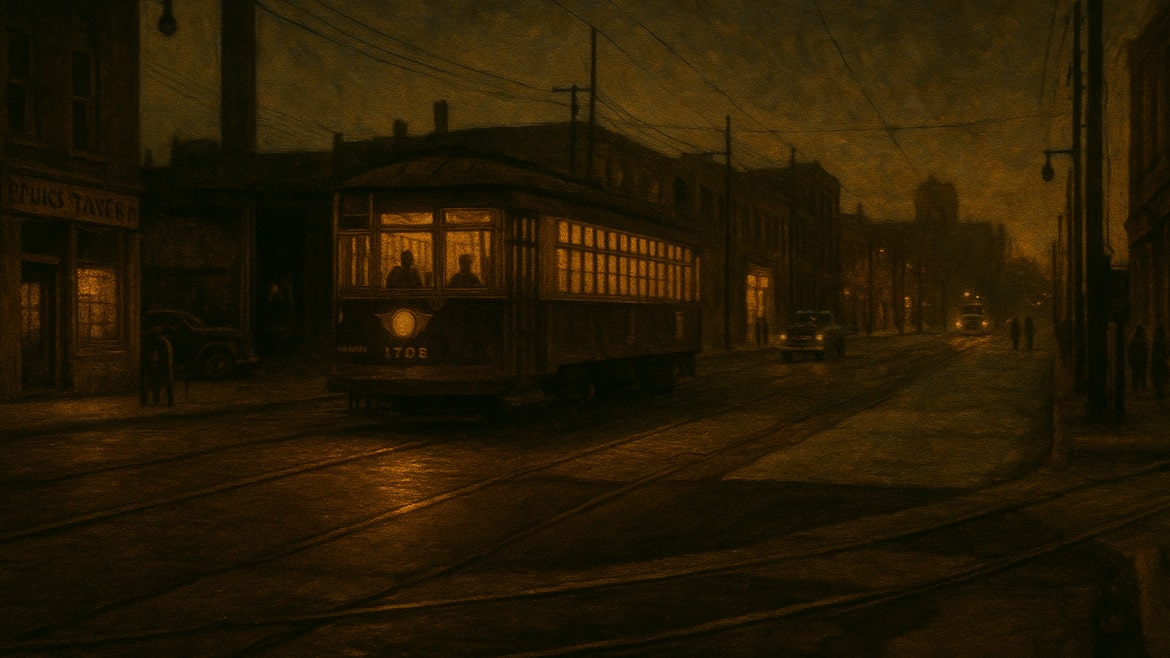“Pilsen’s the heart, but the Lower West Side’s got more than blood in its gutters—there’s paint, prayers, and things stitched into the walls that ain’t been touched since before Chicago had a name.”
Nestled west of the river and east of the freight yards, the Lower West Side is a patchwork of sweat, resistance, and memory. Dominated by Pilsen, this area in the early 1950s is a bustling hub for Mexican and Czech immigrants, still pulsing with cultural pride and working-class grit. Vibrant murals bloom on brick, even as tenements crumble. Laborers flow from metal shops and factories, filling the air with the tang of sweat and steel. Spanish and Bohemian echo in the alleys. Church bells try to out-ring sirens.
But underneath the scent of tortillas and copper wiring, something’s old and awake. The Veil lingers heavy here—stitched into folk shrines, sung into lullabies, etched into door frames with herbs and ash. Old women won’t walk past certain storm drains. Young men in black jackets vanish near freight tunnels. The city pretends Pilsen is just a colorful slice of the melting pot. But the locals know better. They keep watch. They keep faith. And they keep knives close.
Neighborhoods
Pilsen Proper
A tight-knit maze of flats, corner shops, bodegas, and parishes. Culture hums on every block—mariachi, pan dulce, milagros strung across doorways. But pride walks hand-in-hand with pain. Police treat it like a buffer zone. The Outfit only ventures in for business, not conquest. Meanwhile, local curanderas keep the balance—healing wounds and quieting things that come through the walls at night.
Blue Island Yards
Named for the old Blue Island Avenue spur, this patch of back lots, abandoned factories, and freight lines is half ghost town, half gangland. Kids with spray cans write warnings in sigils no outsider can read. Union holdouts hole up in flop houses, drinking and whispering about the strike that never ended. The Veil here feels rusted but sharp—like a nail through your foot.
Notes
The Our Lady of Tepeyac shrine grants favors—but only once, and always with a price.
A Veil-bleed warped the Santo Niño mural on 18th—it now weeps black sap.
A three-block stretch of Blue Island Avenue is said to be stuck in a loop—walk it long enough and you start to see next week.
Local kids play a rooftop game called el salto final. No one talks about the winners.
The El stop on Damen is home to a blind accordionist who plays songs that open doors.
An old Czech butcher runs a basement lottery where the winnings are names—not money.
The Chupaderos gang has ties to something deeper—they wear masks, not for show, but protection.
A small cantina changes its menu every night based on customers’ dreams.
It’s warm here, sure—but warmth attracts things. Spirits, saints, scavengers. Pilsen burns with memory—and not all of it’s kind.
| Wealth |
|
| Security & Safety |
|
| Criminal Influence |
|
| Occult Influence |
|
| Mexican & Mexican-American |
45% |
| Czech & Slovak |
30% |
| Other European (Polish, German, Irish) |
15% |
| Other (Black, Asian, Mixed)</td]
| 10% |
|
South Side
|
|
Southwest Side
|
TODO
Key Landmarks & Locations (Real-World & Civic):
St. Paul Catholic Church – Longstanding religious center with Veil-aware clergy.
Dvorak Park – Community hub, but rumors swirl of a buried altar under the softball field.
18th Street Commercial Strip – Economic lifeline of the neighborhood, colorful and volatile.
Pilsen Freight Depot – Decommissioned hub, now used by smugglers, spirits, and worse.
Benito Juárez Community School Site – Not yet built in 1953, but the land it will occupy is cursed.
Czech Workingman’s Hall – Once a union hub, now the occasional site of underground rituals.
Pilsen Proper:
Casa de Flores – Florist shop and Veil wardens’ meeting place.
Cantina Rojo Muerto – Popular, rowdy, and possibly protected by a folk saint.
La Lumbre Roja – An occult shop posing as a bakery—smells like cinnamon and ozone.
The Hollow Wall – An alley that eats sound and sometimes visitors.
Teatro de los Ecos – Tiny stage where performers claim the walls whisper lines.
Escalera del Alma – A stairwell painted with eyes that follow only some people.
Blue Island Yards:
Chupaderos Stronghold – Abandoned boxcar said to house the gang’s totem.
The Pig Iron Club – Makeshift bar and weapons bazaar beneath the train bridge.
Ghostline Tunnel #3 – Old rail tunnel that only goes one way now—into the Veil.
Coaljaw’s House – A recluse mechanic who speaks in tongues and eats iron filings.
El Toro Encantado – A statue of a bull that appears in different lots without explanation.
The Crawler Pit – Cement drainage basin that some say leads to an old world below.




Comments